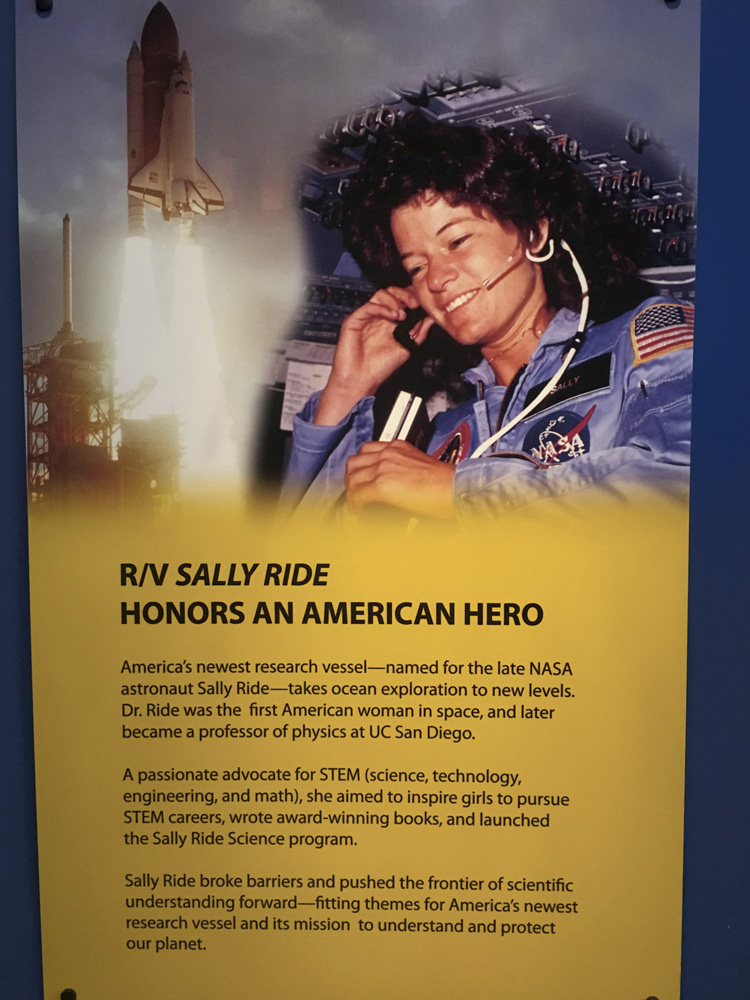
Quincy Lee
Science & Tech Editor
Space has always been considered the last frontier. But generations of space research has brought us to know more about the surface of Mars than the bottom of the sea. With many barriers to full exploration of the Earth, the term ‘last frontier’ might be better suited to a staple of the University of California, Santa Barbara’s landscape: ocean.
On Nov. 2, the research vessel R/V Sally Ride, owned and operated by the Scripps Institute of Oceanography at UC San Diego, will embark on its maiden expedition, starting a new wave of oceanographic exploration.
R/V Sally Ride is equipped with the latest and greatest technology, from sonar-based seafloor mapping systems to deepwater imaging sensors. This outstanding technological development creates an unprecedented range and capability to understand the depth of the oceans.
The naming of the vessel honors the inspiring researcher, Sally Ride, who was the first American woman to travel to space. Leading the study of physics as both an astronaut and UCSD professor, she fostered a curiosity to know more about the planet. “There’s something magical about pushing back the frontiers of knowledge,” Ride once said. That’s something that is almost part of being human and I’m certain will continue.”
Ride’s goals, to seek and spread an understanding of the ocean and atmosphere, coincide with the mission statement of SIO and the Office of Naval Research. In her honor, the R/V Sally Ride embarks on the maiden research expedition, surveying the California Current and expanding knowledge of the ocean’s topography, biology and chemical composition.
The researchers aboard the Sally Ride will use sonar technologies to map the seafloor by sending sound waves and recording the response time. As the average depth of the ocean is over 2000 meters, the researchers depend on this sonar system for accurate measurements. R/V Sally Ride contains a very quiet, almost mute, engine; previously, the roar of the ship’s engine would disrupt the sound waves’ data.
These sensors are developed so that they can depict the texture of the ocean floor, a feat rivaling that of the fictional Nautilus. A harder surface will refract the sonar at a different wavelength, and this data is now recordable by the onboard seafloor mapping system.
These measurements are sent back to UCSD, where it can be used to facilitate the outreach programs available to the public, such as the Scripps’ Birch Aquarium. The newest exhibit is designed to showcase the information so that people can gather an appreciation and understanding of the ocean.
The interactive exhibit projects the map of the seafloor onto a sandbox, where children can physically construct the underwater mountains, ridges, volcanoes and canyons that lie at the bottom of the ocean. This hands-on approach to learning further teaches people about the physical world around them and promotes environmental intelligence.
In its maiden expedition, the Sally Ride will also use Doppler sensors and autonomous underwater vehicles (AUVs) to gather information about the ocean’s biological components. With a grand portion of the global food supply coming from the oceans, this research is crucial to ensuring that the oceans remain healthy and can support the people who depend on it.
In honor of Ride and all her work in demonstrating the exciting and pertinent aspects of scientific research, this oceanographic expedition is pushing back the boundaries of that last frontier: the deep blue sea.










